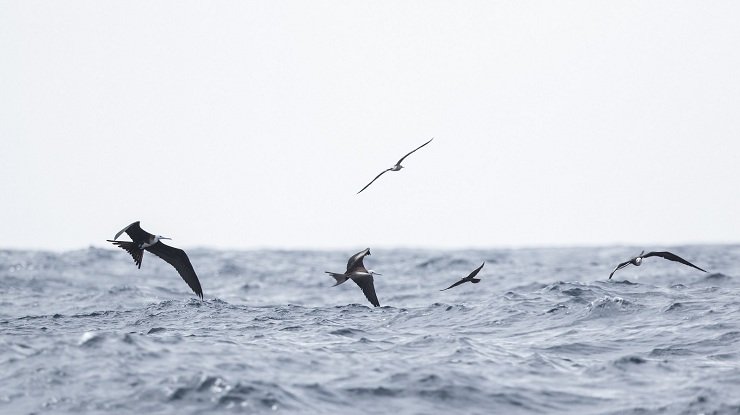
The island of Tobago in the southern Caribbean is much wilder than one could imagine. Hey, in 1959 Walt Disney set up a studio on the island and filmed Swiss Family Robinson there! Such is the allure of Tobago – the British, Dutch and French fought over it a record 31 times, more than any other Caribbean island. Today, it very much retains its wild side. Particularly off the north-eastern tip of the cigar-shaped island (Tobago’s phonetic similarity to “tobacco” is no coincidence) where the Atlantic Ocean and Caribbean Sea come to a sometimes less-than-amicable junction.

Magnificent Frigatebirds, a Brown Noddy and a Red-footed Booby circle a frenzy of activity just beneath the surface.
Little Tobago, formerly known as Bird-of-Paradise Island (long story) is home to important colonies of numerous seabirds. Tropicbirds and boobies monopolize the island from just after Christmas, the raucous calls of Red-billed Tropicbirds are audible from before one even touches the island. By late March, hordes of Laughing Gulls and multiple species of pelagic terns gather for their turn. Just about five kilometers northward, several rocky islets jut out of the rollicking Atlantic. These isles of Saint Giles are beaten tirelessly by the wind from the open ocean, the hardy vegetation present is gnarled and contorted. A large colony of Magnificent Frigatebirds roosts in this unforgiving environment, perfectly playing the part of villain in this story.
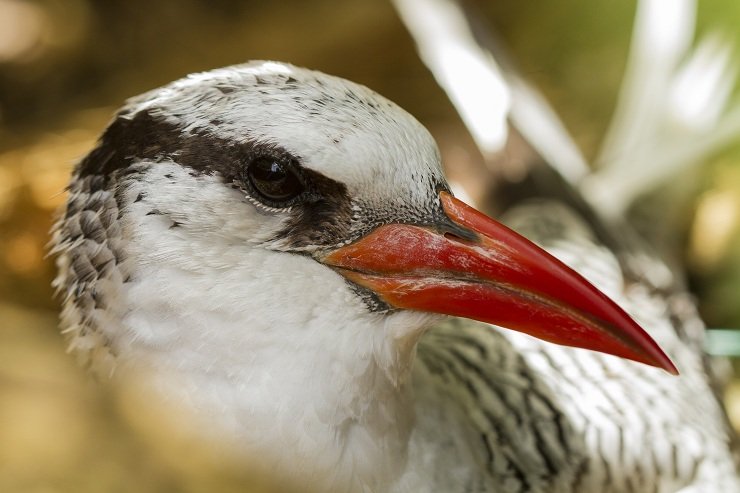
This nesting Red-billed Tropicbird sat on a nest immediately next to the viewing platform on Little Tobago, allowing for some intimate views.
Each day, the smaller seabirds leave their roost to fish in the rich waters offshore – under the watchful eyes of the frigatebirds. The frigatebirds’ reputation as pirates is well-earned, for their efficiency and effectiveness to plunder is unparalleled. Soaring on seven-and-a-half-foot wings, covered in feathers that aren’t waterproof while carving a niche as birds of the ocean – they haven’t survived this long by chance. Soon, parents would need to return to their young – but the normally nimble birds would be heavy with a full crop of freshly caught fish and squid.
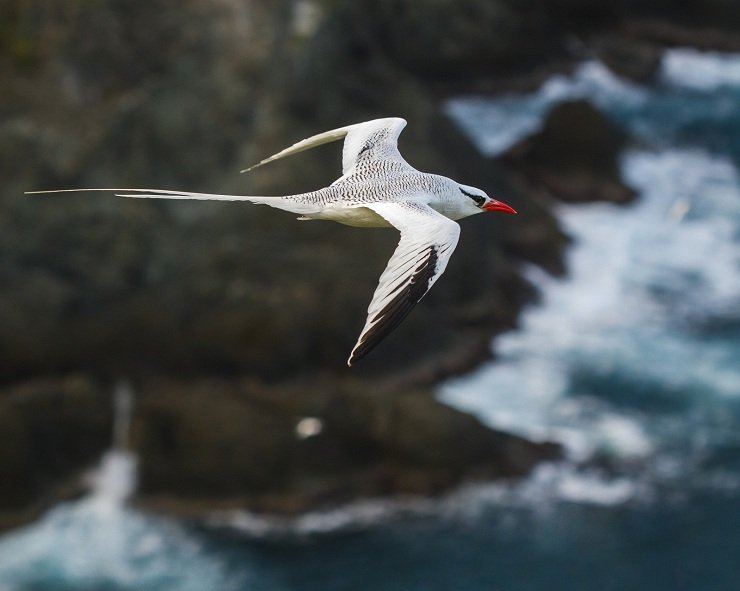
A Red-billed Tropicbird glides over the pounding surf off Little Tobago.
I can attempt to describe the exhilarating chain of events which unfolds each time a tropicbird or booby runs the gauntlet of marauding frigatebirds – but you can see it for yourself in this clip aired by the BBC for the series Life. I did however manage to be in the right place at the right time to experience a gang of Magnificent Frigatebirds that had a Red-footed Booby surrounded. If you look carefully, you can just see its meal about to be ejected.

Red-footed Booby (white-tailed morph) being harassed by Magnificent Frigatebirds.
Whether you decide to hike up Little Tobago or brave the choppy waters around the Saint Giles islands (disembarking on these islands is strictly prohibited), there is much to see. The seabirds are of course, the main attraction.
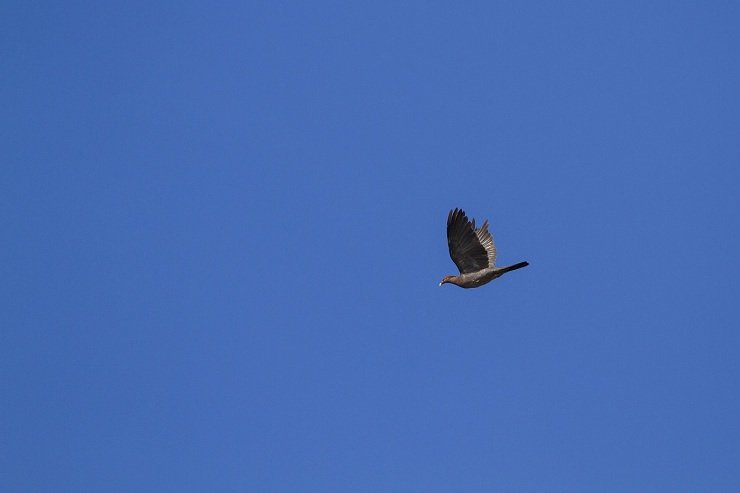
Passerines on Little Tobago aren’t unique, but keep an eye out for Scaly-naped Pigeons – a relatively recent colonizer from the Lesser Antilles.
Boobies come in many colour variations but one very distinctive shape. Both Brown and Red-footed Boobies actively breed on Little Tobago as well as Saint Giles. Occasionally, Masked Boobies have been sighted but a fair amount of luck is necessary to catch a glimpse of this rare visitor.
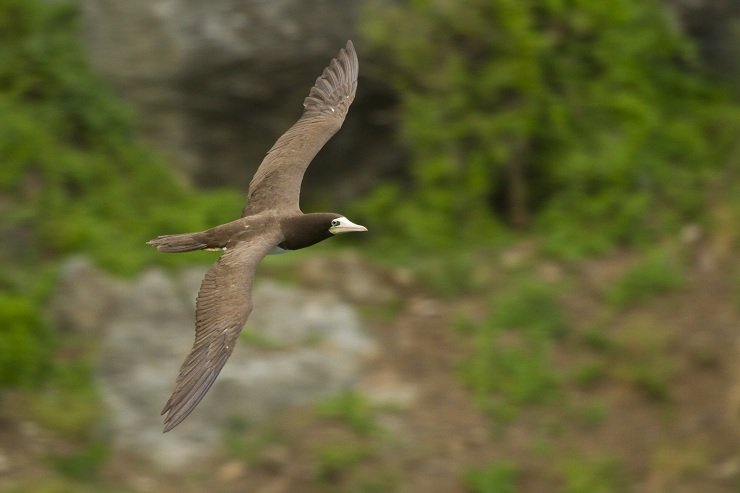
Brown Boobies are easily seen from the observation deck at Little Tobago.
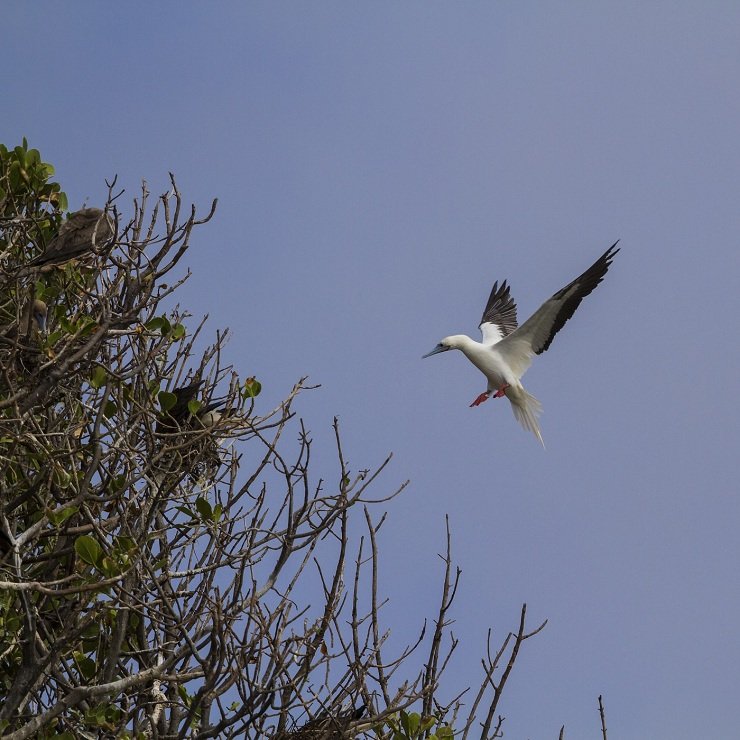
Red-footed Boobies (white morph shown here) have colonies on Little Tobago and Saint Giles.
Many years ago, when I was yet to develop my sea(birding)legs, I found it quite difficult to separate the two black and white pelagic terns. It was this post right here on 10,000 Birds I ended up bookmarking as the definitive source for ID’ing these two species. Presently, I’m comfortable with identifying perched birds which I can examine for some time. My good friend, supremely competent boatman and experienced guide Zolani Frank however effortlessly identifies both species at a distance in flight while operating a rocking boat.
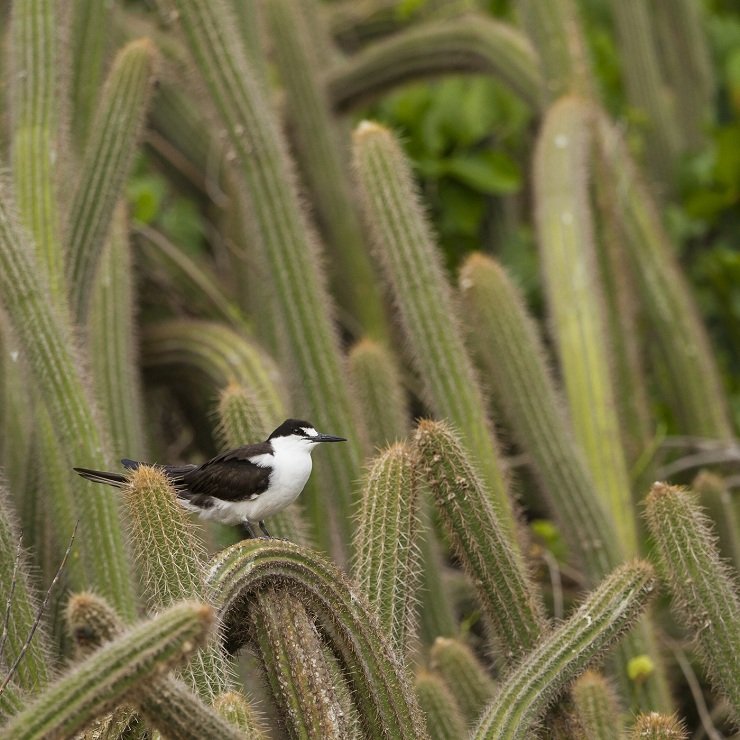
Sooty Tern
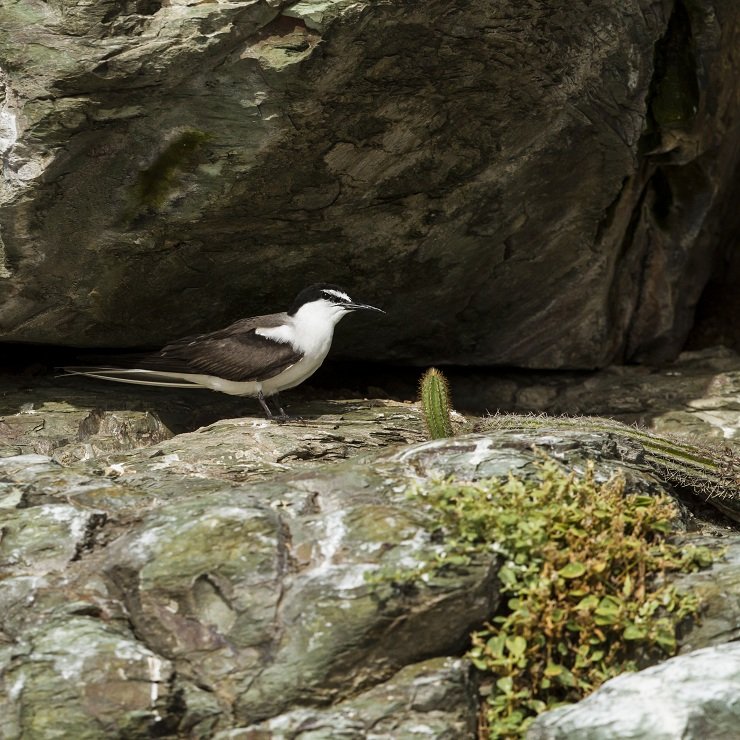
Bridled Tern
Brown Noddies have a special place in my heart. While most “regular” terns are fork-tailed, light-coloured birds with a dark cap, a Brown Noddy is wedge-tailed, rich chocolate brown with a frosty white cap. I’m a sucker for those who go against the grain.
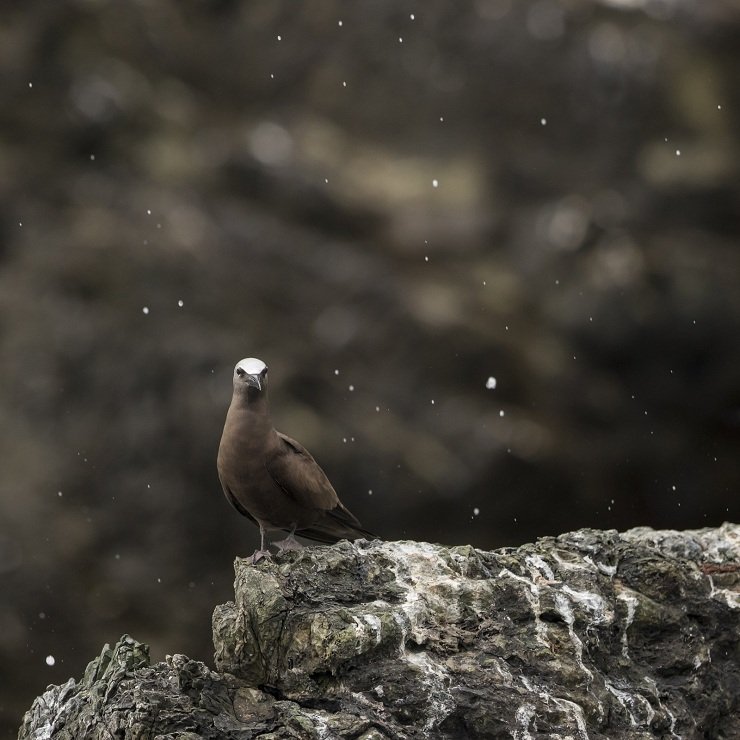
Brown Noddy


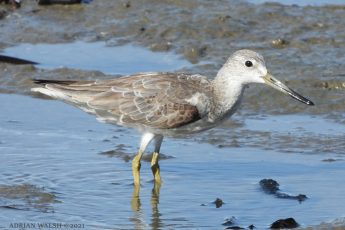

 New writers welcome – please contact us for details.
New writers welcome – please contact us for details.

















Leave a Comment